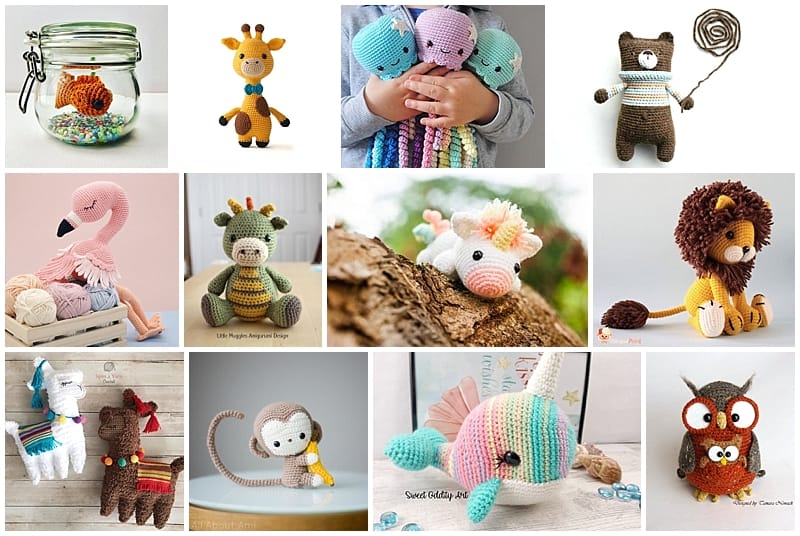Amigurumi: A Journey Through Their Charming History
Have you ever wondered where those adorable crocheted dolls known as amigurumi come from? In this post, we take you on a fascinating journey through the history of amigurumi, from their beginnings in Japan to their worldwide popularity. You’ll discover how these small and charming crocheted companions have become an integral part of crochet culture. Get ready to dive into the history of amigurumi.
Amigurumi have their roots in Japan, where the word “amigurumi” literally means “crocheted or knitted stuffed doll.” While there isn’t a definitive consensus on when and how they originated, it is believed that amigurumi emerged in Japan during the Edo period (1603-1868) when small fabric and paper dolls were created for play and home decoration.
During the 1980s, amigurumi gained popularity in Japan thanks to traditional crochet techniques and the creativity of local artisans. The earliest amigurumi were characterized by their round and simple shapes, typically representing animals and fairy tale characters.
In the 2000s, amigurumi began to gain recognition and popularity worldwide thanks to the Internet and social media. Crochet patterns for these dolls were shared online, allowing enthusiastic crocheters from around the world to learn and create their own crocheted dolls. The amigurumi community quickly expanded, with thousands of people sharing their creations, patterns, and techniques.
As amigurumi spread to different countries and cultures, new designs and styles began to emerge. Artisans started experimenting with different shapes, sizes, and details, creating amigurumi that represented everything from animals and movie characters to inanimate objects and food. Amigurumi became a form of creative and artistic expression.
Today, amigurumi remain extremely popular worldwide. Crochet enthusiasts enjoy creating these adorable dolls as personalized gifts, home decorations, and even therapeutic projects. Moreover, conventions and fairs dedicated exclusively to amigurumi are held, where crochet lovers can meet, exchange ideas, and showcase their creations.
The history of amigurumi is a testament to the creative power and passion of crocheters around the world. What began as a tradition in Japan has evolved and spread worldwide, becoming a unique form of artistic expression. Amigurumi capture the imagination and hearts of people, whether they crochet them or admire them.
Today, amigurumi are more than just crocheted dolls. They represent hours of dedication, patience, and creativity. Each amigurumi tells a story and reflects the style and personality of its creator. They are special gifts that convey love and affection to those who receive them. The beauty of amigurumi lies in their ability to bring joy and happiness to people. Whether used as toys for children, home decorations, or comforting companions, amigurumi have an undeniable charm. Their cute appearance and meticulous details make them hard to resist.

The amigurumi community continues to grow and evolve, with new designs, patterns, and techniques constantly emerging. Crocheters share their passion online and at in-person events, forming bonds and friendships through their shared love of these crocheted dolls.
In summary, the history of amigurumi is a journey full of creativity, tradition, and human connection. These small crocheted dolls have captured the hearts of people worldwide and will continue to inspire future generations of artisans and crochet enthusiasts. So grab your hooks, yarn, and let your imagination soar as you crochet your own charming amigurumi!




Leave a Reply